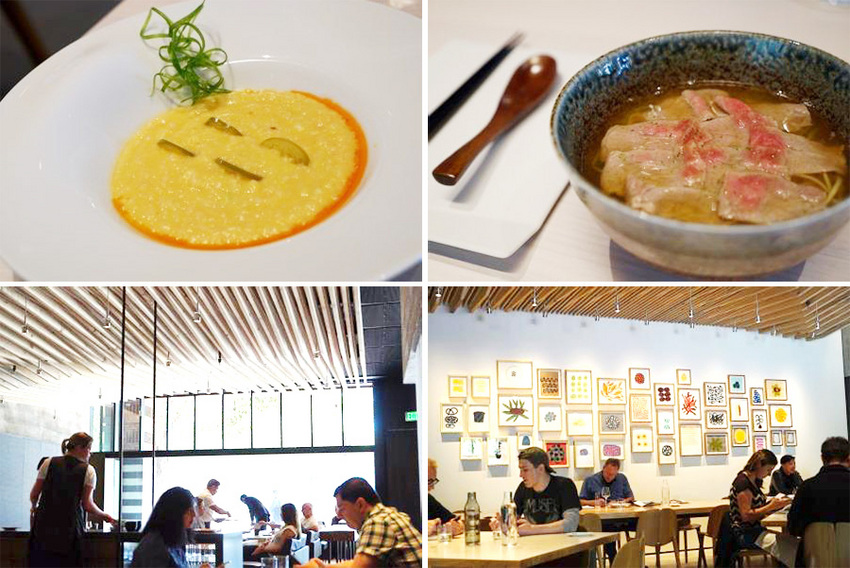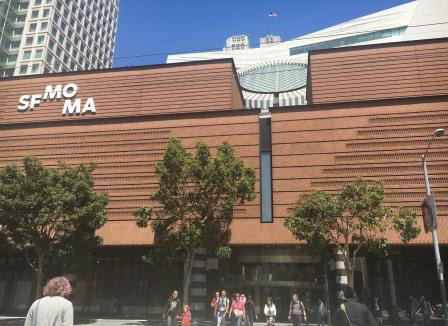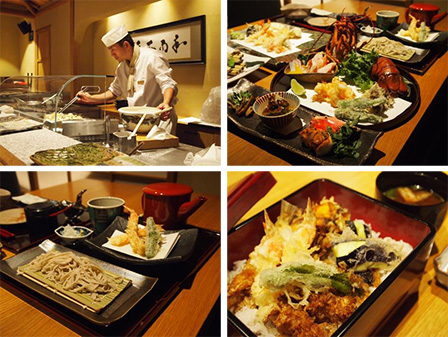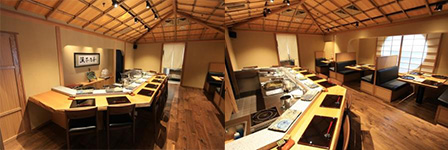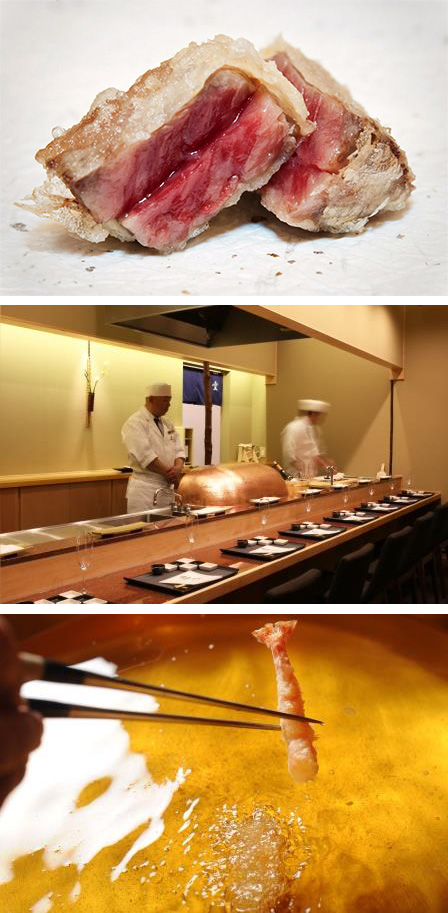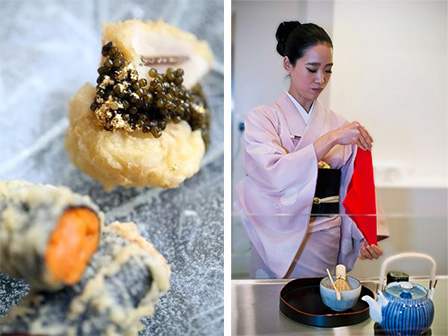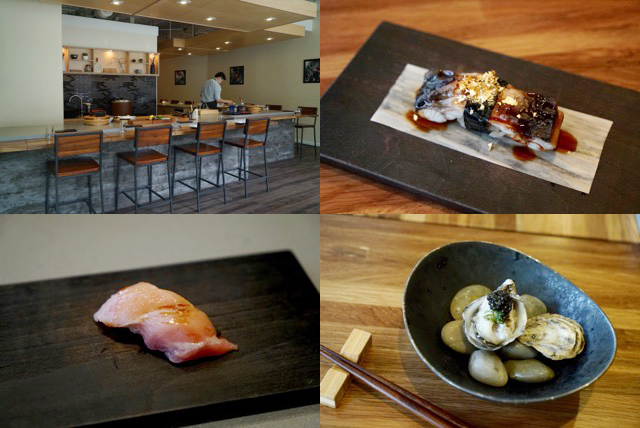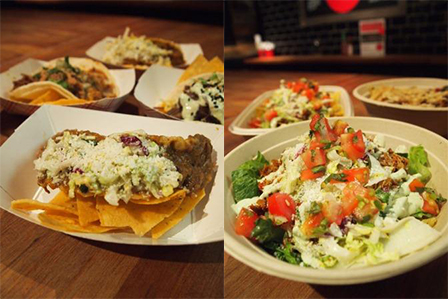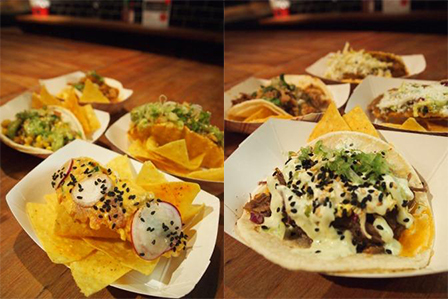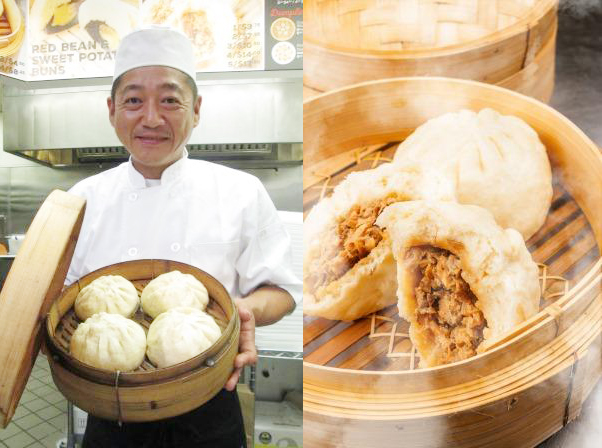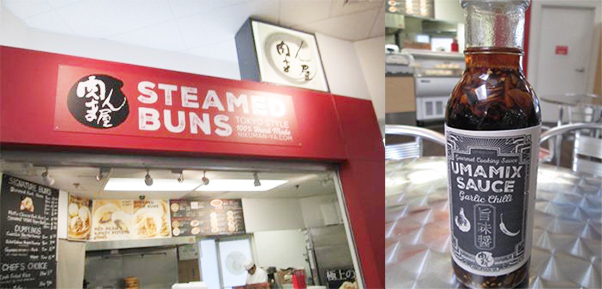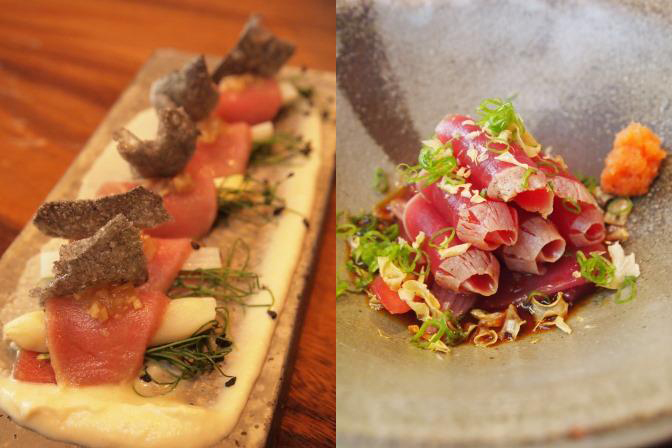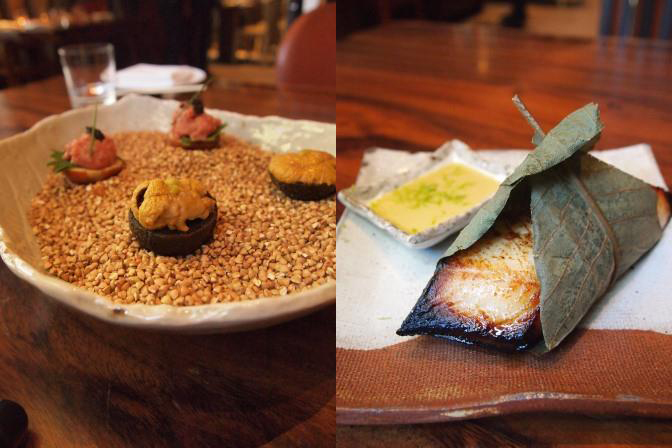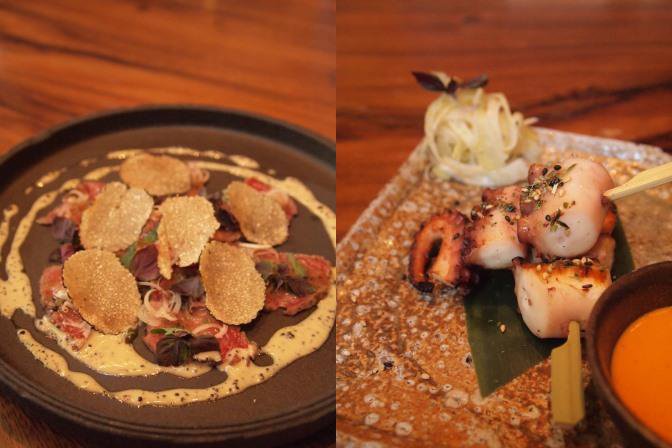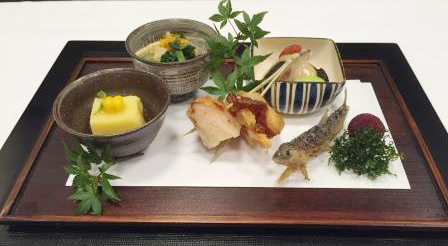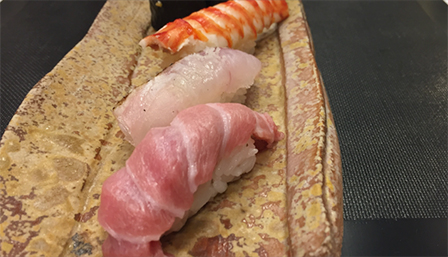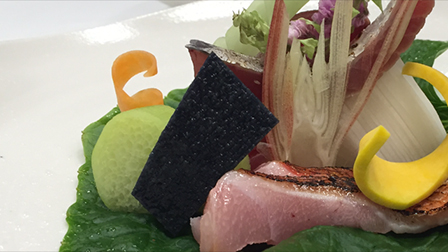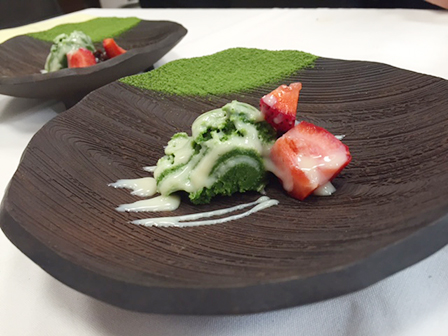“Food Art”, world-famous Chefs’ plates you can experience
By Elli Sekine
In the San Francisco Museum of Modern Art which re-opened this spring after a huge three-year long renovation, a unique restaurant débuted that can totally overturn the conventional image. The restaurant, “In Situ”, is like an edible museum where you can experience not only the dishes by the world’s Michelin star awarded restaurants and chefs, but also a modern interior, a collection of paintings and artistic food plates by the first-class architects, artists, and designers.
Due to the recent big article in the NY Times, this place is catching a great deal of attention from all over the U.S.
Mr. Corey Lee, the owner/chef of the Michelin 3-star restaurants, “Benu” and “Monsieur Benjamin” in San Francisco, oversees this tremendous project. He is a very talented Korean-American chef who learned how to cook in top-rated restaurants in Europe, and worked as the Chef de Cuisine for “The French Laundry” in Napa Valley, which helped him gain the top rank in the chef’s world.
The “Benu”, which he opened after becoming independent, is highly acclaimed for its cutting-edge menu using worldwide ingredients and techniques beyond the range of French-American cuisine. The worldwide restaurants and creators of all kinds of cuisines Mr. Lee has ever encountered with in his career have inspired and polished his excellent taste in his cooking skills. He is collaborating with over 80 chefs here, and the menu shows many items by the recipes of the famous chefs and places including “Noma” of Copenhagen, the pioneer of “Gastronomy”, Mr. Bottura of “Osteria” in Italy (#1 in 2016 World’s Best 50 Restaurants), Mr. Adoria of “Ticket” in Spain, which is another top ranking restaurant in the list, and Mr. Arzak of “Arzak” also in Spain. Then from the San Francisco area, Ms. Waters of “Chez Panisse”, and Mr. Keller of “French Laundry”
The menu always consists of 15 items from the world’s gastronomy list that includes “Japanese cuisine”, one of the world’s intangible cultural heritage. The number of Japanese menu items is a result of Mr. Lee being very inspired by Kyoto Kaiseki and Kappo style cooking, and the second most featured on the menu next to American dishes. The menu shows the names of the top chefs such as Mr. Nakahigashi of “Miyama-So” in Kyoto, Mr. Sasaki of “Gion Sasaki” also in Kyoto, and Mr. Yamamoto of “Ryugin” in Tokyo.
I chose the “Umami Soup” ($38) from the daily menu, which is the recipe by Chef Nakahigashi. It was served in a beautiful Japanese ceramic bowl, and looked more like a gorgeous meat udon than a bowl of soup. The menu name suggests a large umami-filled soup dish, but it’s a simple dish of very light dashi broth with Inaniwa udon and A5 wagyu slices. The beef is so thinly sliced and overpowered by the acidity of the soup, so I could not taste the true Umami of high-quality beef.
The Inaniwa udon is soft and translucent, and easy to swallow. Overall, the volume is too small to satisfy your appetite as a main dish. I also ordered “Carrot Sour Curd” (New York, $18), and “Shrimp Grits”, (Denmark, $14) as appetizers.
Both were nicely flavored, and represented the concept well. The servers were knowledgeable, and explained the menu well, but I wonder how well they and other staff really understand Japanese cuisine. The kitchen staff of about 20 work busily, but maybe merely to complete the process of each given recipe precisely.
On the drink menu, the wine list includes famous European and Californian brands, and in addition, craft beers, and both Yamahai and sparkling sake for pairing.
“In Situ” has a dreamy concept that allows you to experience worldwide famous restaurant menu, but there is a dilemma. The dish creator chef’s spirit can be carried over behind the scenes, but it is not possible to recreate and represent the dish perfectly elsewhere. I wonder how the customers perceive this “World House of Gastronomy”. I am looking forward to hearing the future reviews of this place.
世界の有名シェフの一皿が体験できる“食のアート”
今春3年かけての大改装の末、リニューアルオープンしたサンフランシスコ近代美術館内に前代未聞のレストランが登場した。世界のミシュラン星レストランや有名シェフのメニューが賞味できる「イン ストゥー」は、メニューだけではなく一流の建築士、アーティスト、デザイナー達が手がけたモダンインテリアと絵画のコレクション、プレートに至るまで芸術を統合した“食べられる美術館”だ。最近ニューヨークタイムス に大体的に取り上げられ、全米で注目を浴びている。
この壮大なプロジェクトを統監するのは、サンフランシスコのミシュラン3ツ星レストラン、「BENU」と「ムッシュ・ベンジャミン」のオーナーシェフ、コーリー・リー氏。コリアン・アメリカンのリー氏は、これまでヨーロッパの一流レストランで修行し、ナパバレーの「フレンチランドリー」の料理長(Chef de Cuisine)を経て料理会のトップに上り詰めた天才シェフ。 独立後オープンした「BENU」は、フレンチアメリカンの枠を超え、世界の食材やテクニックを取り込んだ先駆的なメニューが高く評価されている。そんな彼の料理のセンスを磨き上げてきたのが、今まで関わった世界のレストランと料理クリエーター達だ。ここで彼がコラボするシェフの数は80人を超えており、メニューには、「ガストロのミー」の先駆者、コペンハーゲンの「ノマ」、「世界ベストレストラン50」(2016)ランキング1位の「オステリア」(イタリア)のボチュラ氏、同じく上位の「チケット」(スペイン)のアドリア氏、「アーザック」のアーザック氏(スペイン)など、そして地元からは「シェ・パニーズ」のウォーターズ氏、「フレンチランドリー」のケラー氏のレシピが目を引く。
メニュー構成は、世界の美食プレートから常時15品がリストアップしてあり、その中には無形文化遺産である「和食」のリストもある。リー氏自身が日本で最も影響を受けたのが京都の会席や割烹料理という事もあり、日本メニューのリストは米国に続いて多い。中には「美山荘」(京都)の中東氏、「祇園佐々木」(京都)の佐々木氏、「龍吟」(東京)の山本氏など日本を代表するトップシェフ達の名前が並ぶ。
本日のメニューから中東シェフのレシピ、「Umami Soup 」($38)を頂いた。日本製の美しい陶器の椀に盛られた一品は、実際「スープ」というより、豪華な「肉うどん」だった。メニュー名から旨味とボリュームたっぷりというイメージだが、ブロスはあっさりした出汁味と稲庭うどんで具はA5和牛といったシンプルな一品。高級食材ながら肉が薄切りなのとブロスの酸味で本来のジューシーな肉の旨さは得られなかった。稲庭うどんは、透明感があり柔らかくゆであげ舌触り、喉越しも良い。しかし量は少なめなのでメインとしては物足りない。同じく注文したアペタイザーのCarot Sour Curd(ニューヨーク、 $18) やShirimp Grits (デンマーク、$14)は味付けも良くコンセプトに沿った内容だった。サーバー達はメニューを熟知し説明にも問題はないが、彼らを含め、どれだけの従業員が和食を理解しているかは不明だ。厨房で忙しそうに手を動かす訓練を受けた約 20 人の料理人 達はレシピに忠実に仕上げているのが伝わってくる。ドリンクメニュ−は、ヨーロッパ各地の有名なワインとカリフォルニアを組み合わせたワインリストに加え、クラフトビール、日本酒も山廃とスパークリングをペアリングとして揃えている。
「イン ストゥー」は、世界の有名レストランのメニューが体験できる夢のようなコンセプトなのだが、その舞台裏でシェフの精神は受け継いでも作者なき作品は完璧に仕上がるのだろうか。そして客はどのようにこの高価な美食館"を受け入れるのか、これからの評価が楽しみだ。
In Situ
151 Third Street, San Francisco, CA 94103
Lunch: Monday through Sunday. 11:00 - 16:00
Dinner: Thursday, Friday, and Sunday, 17:00 - 21:00
Tel: (415) 941-6050
http://insitu.sfmoma.org/'rel="nofollow">website








